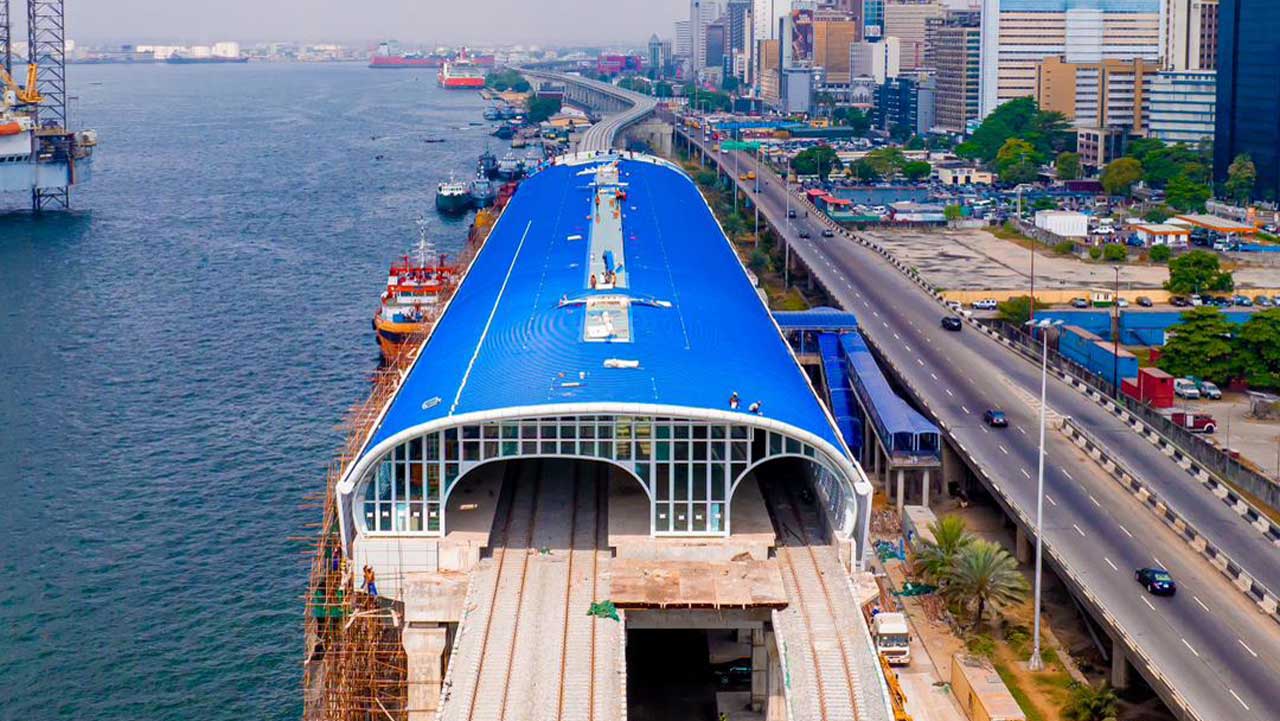 China Civil Engineering Construction Corporation (CCECC) has said that the just completed Lagos metro blue railway line would greatly alleviate traffic congestion.
China Civil Engineering Construction Corporation (CCECC) has said that the just completed Lagos metro blue railway line would greatly alleviate traffic congestion.
In a statement made available to The Guardian, the Head, Public Affairs and Legal Matters, CCECC Lagos office, Mr. David Zhao, said the Lagos Rail Mass Transit (LRMT) Blue Line, an Electric Motor Unit (EMU) Scheme, with a total distance of about 27km from Marina to Okokomaiko, will be served by 11 stations.
He noted that this development brings the total railway project CCECC has completed in Nigeria in five years to about 730km.
According to him, beside alleviating the traffic pressure, the project would also speed up local economic development and further consolidate the position of Lagos as the economic, transportation, and logistic centre of West Africa, as well as promoting the development of other parts of Nigeria.
He noted that the project, which showcases the friendly relations between Nigeria and China, would provide beneficial references and guidance for the planning and construction of railway systems in other Nigerian cities.
Zhao stated that the train cars will be delivered brand new and the service would not fall short of the standards set by CCECC’s previous projects that are in operation.
“The alignment track is designed to have both elevated and at-ground levels.
The plan was initiated by the Lagos State Government to meet the present economic and population demands.
“At present, there are 40 Chinese employees and 800 local employees in the Lagos Light Rail Blue Line Project, with the percentage of Nigerian employees exceeding 95.
The project provides a lot of employment opportunities, among which the number of technical staff reaches 400 and the number of management staff reaches 40, providing Nigeria with a large number of skilled and managerial talents,” he said.
This project, which has become an addition to the infrastructure base of the country, is 12km spanning between Mile 2 and Marina downtown.
Lagos State governor, Babajide Sanwo-Olu who said the project is a promise kept by his administration, said that the totality of the Lagos metro line that segmented into six would convey 500,000 daily when completed.
Given this figure and if this completed segment is one of the six equal parts, it will therefore move about 31 million commuting Lagos population in a year, with a daily average of about 84,000 passengers.
Preparatory to the commissioning, Lagos Municipal Transport Authority (LAMATA) lauded the quality of work done by CCECC.
Consultant, Corporate Communication, LAMATA, Kolawole Ojelabi, said the completion of the infrastructure was in fulfillment of the promise made by Sanwo-Olu, that the project would be completed in the last quarter of 2022 ahead of the commencement of passenger operations in the first quarter of 2023.
He said the blue line project was one of the six rail lines and monorails prescribed for Lagos in the state’s Strategic Transport Master Plan (STMP).
On completion, the entire railway system is projected to move more than 500,000 passengers daily. That also translates to over 182 million passengers a year.
In March 21 this year, the Chinese Ambassador to Nigeria, Mr. Cui Jianchun, had an audience with the Nigerian media at the Lagos International Airport after President Muhammadu Buhari commissioned the new terminal of the airport also built by CCECC.
Ambassador Jianchun in the discussion explained how the projects executed by Chinese firms in Nigeria, especially CCECC, form part of the crux of the diplomatic framework and policies of China towards Nigeria.
For instance, the International Energy Agency (IEA) noted from the environmental protection perspective that: “the railway line can provide substantial benefits for energy sector as well as for the environment. By diversifying energy sources and providing more efficient mobility, rail can lower transport energy use and reduce carbon dioxide and local pollutant emissions.”
Further on this, a World Bank document on railways in developing countries published in 2022 explained that: “As a green mode of transportation, railways have an important role to play in decarbonising transport through shifting transport from more polluting modes such as road and air. Railways can enable economic growth, which in turn generates increasing transport demand, while keeping greenhouse gas (GHG) emissions low.
“However, in many parts of the world, railways have lost traffic and market share to air and road transport modes. As countries seek to reduce their GHG emissions, while still delivering on economic growth, many are rethinking the role of rail.”






